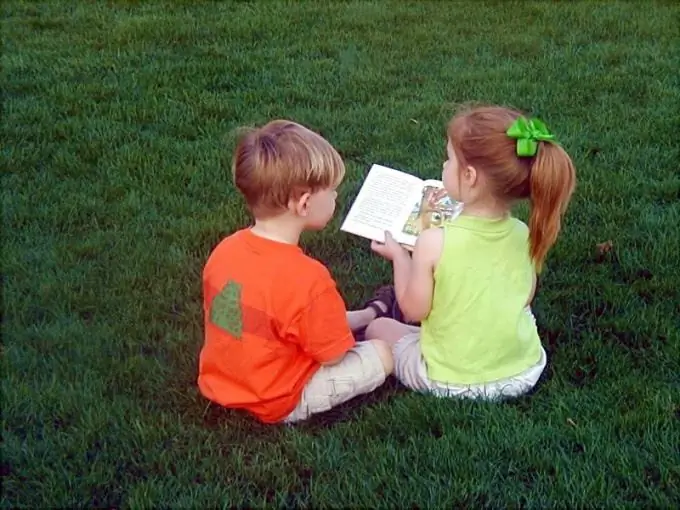Making a children's book with your own hands is an unforgettable experience for both parents and kids. In the process, you will have to try to typeset the text, make a binding, draw illustrations. All these stages ultimately solve one problem - the creation of the design of the book. So that the result does not disappoint you, follow the sequence of actions and focus on the "character" of the work you are publishing.

Instructions
Step 1
Choose paper based on the age of the child and the technique in which you plan to do the illustrations. If the kid has not yet learned to handle books very carefully, loves to leaf through them, looking at them, feeling each page - take dense material. For example, pastel paper or cardboard. It is important that the surface is rough and not glossy. You can choose any color of the base on which the text will be clearly distinguishable. Choose the format of your future book. It is not necessary to make it traditionally rectangular. You can give the sheets a square or any other shape.
Step 2
Determine how the text is applied to the pages. Print it with a printer or write it by hand. Determine the manufacturing sequence depending on this choice. In the first case, you will first need to apply the text, and then make the binding, in the second - vice versa.
Step 3
One of the stages of book design is the design of the text itself. In this process, it is important to consider the basic rules of typography (they can be found on the Internet). Choose a typeface and font size if you are typing a book on a computer. Do not get carried away by the unusual style of letters - they are difficult to perceive, especially by a child. Consider the needs of the reader and when determining the size of the font - it should not be small, even if the format of the book will be small. The minimum size allowed is 12.
Step 4
If you decide to write by hand, do not limit yourself to neat block letters. Flip through calligraphy textbooks and old storybooks. Of course, the first time you will not be able to reproduce the font according to all the canons, but you will surely succeed in stylizing the spelling. In addition, decorate the book with traced drop caps - a decorative first letter at the beginning of each chapter or work.
Step 5
Complete your design with separators and page numbers. Cut them out as a stencil or stamp. Using a ruler and a pencil, mark the places for applying stripes along the edges of the page, between parts of the work. Have your child put them down on their own
Step 6
Make illustrations for the book. Together with the kid, come up with which moments of the work will be interesting to draw. Find out how he represents the main character. Ask to draw it on a draft. Improve the picture, if necessary - change the style of drawing, complement the composition with other characters, depict the scene, the background. Invite your child to color in gouache on the drawing transferred from the draft to the pages of the book. He will also be able to try himself as a designer, if fragments of the drawing need to be cut out of colored paper and pasted or translated using a stencil. For gluing, you can take pieces of fabric, clippings from magazines and textbooks - then you can say that you have designed the book using the collage technique.
Step 7
The last thing to do is design the endpapers for the book. Use the same style as in the illustrations. To avoid cluttering these pages, fill them with an abstract pattern made up of the items mentioned in the content.
Step 8
Design the cover the same way. Write the title of the work, copying the font with which the text is typed. It can be painted or cut out of paper. To preserve the book better, make a dust jacket. For a children's edition, a fabric, pleasant to the touch, is suitable. Trim it to fit the book, keeping in mind the width of the spine, and add pockets for the endpapers. Decorate the cover with 3D sewn appliqués depicting the characters in the book.






